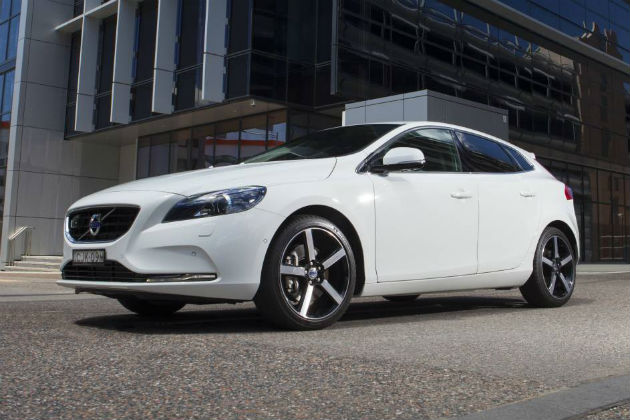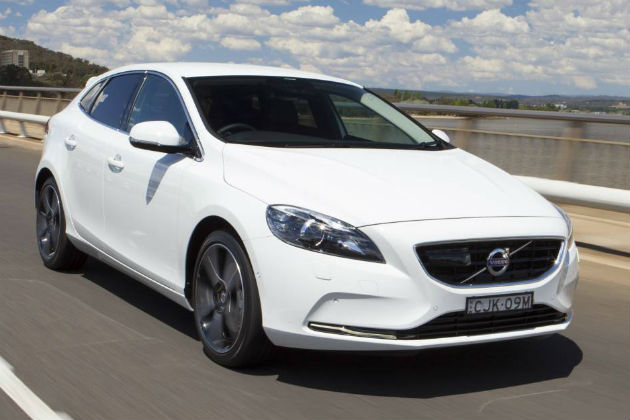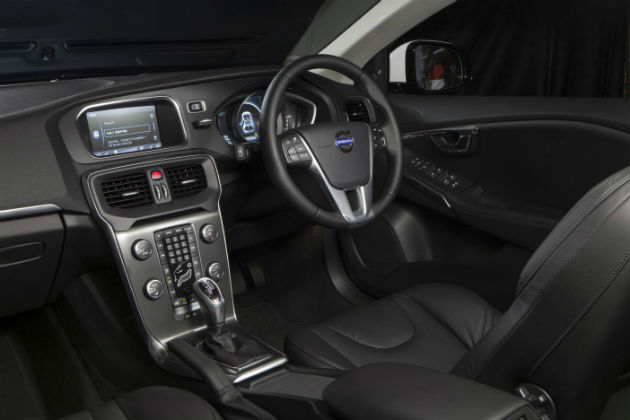By Alex Forrest
July 17th, 2014
More than 50 years ago, Volvo pioneered the modern seatbelt, installing them as standard on their cars from 1959 and then removing the patent on the technology so all car makers could make their cars safer.
Back then, Volvos were fun and sporty to drive and so is the V40, which also carries a pioneering piece of safety technology: the pedestrian airbag.
It seems Volvo’s safety innovation is at its best when they’re also making cars that are good to drive.

Given approximately 180 pedestrians are killed on Australian roads each year, the pedestrian airbag has the potential to drive that figure down.
Similarly to a regular vehicle’s internal airbags, the pedestrian airbag inflates in milliseconds. Of course, the key difference is that it inflates on the outside of the vehicle, and covers about one third of the windscreen and the lower parts of the A-pillars.
The pedestrian airbag is triggered by sensors in the front bumper, which register the physical contact between the car and the pedestrian. The rear end of the bonnet is released and at the same time elevated by the deploying airbag.
Amazingly, the pedestrian airbag is the V40’s last resort when it comes to looking after pedestrians.
If you opt for the $5,000 driver support pack, it will include a pedestrian detection system, which can detect when a pedestrian steps out onto the road in front of the car, and automatically apply the brakes if the driver doesn’t.
The pedestrian detection system works via a camera mounted in the windscreen and a radar unit in the front grille.

Both of these feed information into the V40’s other safety systems, such as the more established City Safety system which can automatically brake for vehicles immediately in front, and the blind spot warning system.
The safety pack also includes active cruise control, which when activated, keeps a safe distance from the vehicle in front.
Its windscreen camera can even ’see’ roadside speed signs, prompting a warning on the dashboard if the driver is going too fast for the area.
Oh, and the V40 can also automatically parallel park itself if you’re not feeling up to it. This is particularly relevant to the V40, because its turning circle is quite big.
The interior is in Volvo’s typically minimalist style and includes the now well-known and functional ‘floating dash’ which allows storage space behind the buttons on the central part of the dash.

You can choose between two petrol engines and two diesels, all turbocharged. The one we tested was the five-cylinder, 2.0-litre turbocharged D4 Kinetic with six-speed auto.
It makes 130kW and 400Nm and starts at $42,490 plus on-roads.
Other engines in the range comprise the T5’s 2.5-litre petrol (187kW and 360Nm), the D2’s 1.6-litre diesel (84kW and 270Nm) and the T4’s 2.0-litre petrol (132kW and 300Nm).
| Price driveaway (as tested): |
$42,490 |
|---|---|
| Engine: | 2.0-litre diesel |
| Power: | 130kW @ 3500rpm |
| Torque: | 400Nm @ 1750-2750rpm |
| Claimed fuel economy: | 7.6L/100km |
| Kerb weight: | 1462kg |
| Connectivity: |
Bluetooth phone & audio, AUX & USB inputs |
| Spare tyre: |
Space saver |
| ANCAP Rating: | 5 stars |
| CO2 Emissions: | 139g/km |
